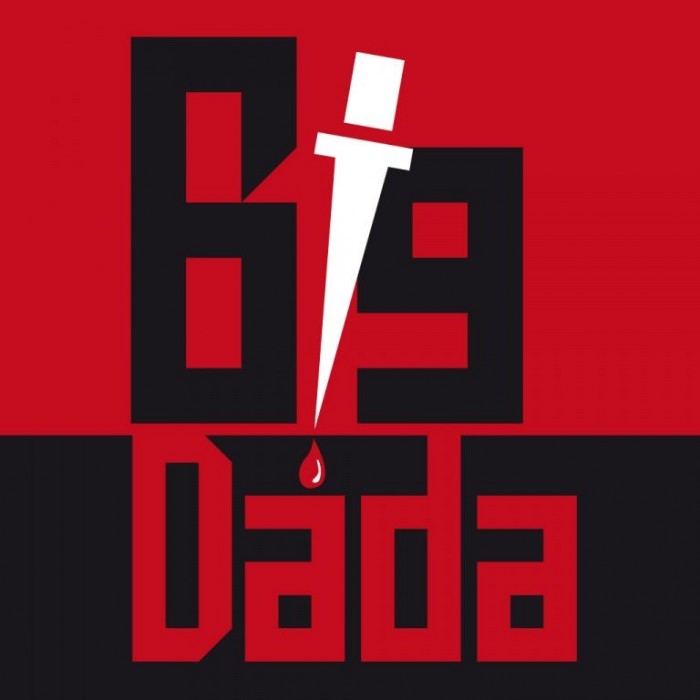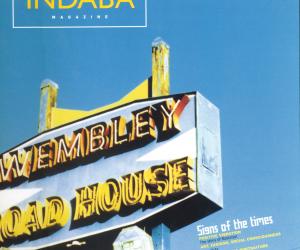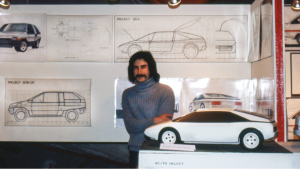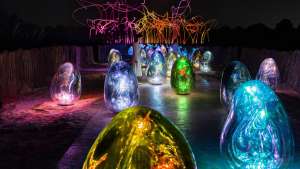First Published in

Adaptation, as evolution has proven, is the key to survival. Take painting for example. The camera was probably the best thing that could have happened to painting.
When the camera happened along with its ability to capture reality more accurately and efficiently than even the most talented brushsmith, it seemed inevitable that the streets would soon be filled with scores of pan-handling former artists. However, freed from the shackles of representational realism, painting was suddenly free to re-invent itself and instead of yet more dreary pictures of overweight women and stern-faced gentry, we suddenly had all sorts of nifty movements like cubism and surrealism.
With film having usurped its narrative role, theatre finds itself in a similar pickle. For many younger folk, theatre is a bit of an antiquated curiosity; something Hollywood actors go off and do to prove there's more to them than $20 million a movie. Not that theatre's exactly raised a sweat trying to re-invent itself. It's still producing the same grim dramas that seem to be created more for the benefit of the actors than the audience. There are only so many nudge-nudge wink-wink sex farces where a bunch of luvvies prance about opening and closing doors that audiences will put up with before they begin to get a bit testy, and decide that maybe they'll stay home and paint the cat instead.
Clearly, if theatre doesn't want to become even more side-lined than it already is, it must provide an experience that is uniquely theatre.
South African Brett Bailey's new play Big Dada is a shining example of what theatre can do right. No mean feat when the subject matter is the grim history of an insecure, polygamous dictator with cannibalistic tendencies. How to visually present this and retain audience attention without boring people to death or depressing them to same - that was the challenge.
The sets for Big Dada were designed by Michaelis graduate Martine Jackson and have admirably blended traditional and contemporary African designs to create a vibrant, iconic setting - a wonderful utilisation of the set as character. Claiming not to have too much faith in the traditional theatrical set-up, Bailey and Jackson wanted the stage to resemble a central African painting. They were successful. The set effectively captures that vibrance. The bright colors of the spaza* shops, advertisement-like slogans and voodoo shrines all collide to create a setting that not only complements but actually augments the whole tone of the play. Through the sets and over-size props, Big Dada draws attention to the un-reality and artifice of the situation it's depicting. They deliberately refuse to take a stab at realism, their merely functional purpose falls away and as a result they're free to be so much more than just a backdrop.
As Bailey notes, the theatre is, or at least should be, a realm of dream and illusion, and as such creating the right atmosphere is key. Roman Polanski has observed that, without atmosphere "it's all dialogue or movement." Big Dada makes use of a number of clever devices to create atmosphere. A particularly effective device is the use of smell since the old nose is not one of the sensory organs one comes into the theatre expecting to use. (If memory serves, trash pope John Waters did release his film Polyester in Smell-O-Rama, but this was more a nifty gimmick than a genuine atmospheric aid.) Bailey has used this technique before - his previous plays have also used the burning of mphepo, a herb sangomas use to drive away demons, and it's wonderfully effective in breaking the audience's expectations of how a play should properly behave.
Bailey's intention is to blur the traditional distinctions between audience and stage, to engage the audience and break through their comfort zones. Killing off the genial, though somewhat pedantic, narrator mid-way through the first half is appropriately disconcerting. It is however the breaking down of the fourth wall that really gets things going, particularly when Big Dada himself calls for the house-lights to be upped and picks on certain members of the audience along racial lines, like a good bigoted dictator should. This technique, having the actors not exactly coming out of character, but addressing the audience directly, as used in TV shows like Moonlighting and Northern Exposure, is still fresh enough to have effect. It is not however without its dangers. Martin Scorsese has said that his films don't contain sex-scenes because they arouse the viewer too much, thereby fracturing the narrative flow. Having actors leap off the stage and invade the audience's safety zone risks doing exactly the same thing. The Jim Rose Circus, the shock freak show, sends masked chain-saw wielding maniacs into the audience whilst playing merry hell with the lights, all the while delivering the sort of terrifying panic-inducing experience horror films can only dream of. This ultimately acts against the overall impact of the show. If the audience is worried about actors bounding into the audience, that's where all their attention is going to be focused, everything else going on becomes distinctly peripheral. Still, this coming off the screen is something cinema can never offer viewers and as such is a vital theatrical strength. Bailey's characters, while invading audience space never overstep the mark - you sit up a little straighter in your seat, but you don't have the urge to hide under it or charge helter skelter for the nearest exit. His use of lighting pyrotechnics is also wisely reserved for the grand finale, and all the more effective for the restraint of use.
What perhaps impresses most about Big Dada's staging is the fact that there's so much to watch at any given time. While the ostensible reason for this was to capture the sense of African energy, its ultimate visual effect greatly transcends this intention. No matter how elaborate the sets, the human eye always gravitates to and isolates the human form in any given landscape (which is why shop window displays use mannequins to 'model' what they want you to see), and with the majority of the cast being on stage at any given time, the viewer's gaze is autocratically directed to specific points. In cinema, a similar effect is achieved by the use of deep-focus, wherein everything on screen is rendered in sufficient clarity that it is entirely up to the viewer to decide where he or she directs attention, and thereby assigns importance. Bailey was warned that when everything is given equal emphasis nothing has meaning anymore, but he only listened with half-an-ear. The result is that while meaning is certainly not lost, the viewer is free to direct his gaze as he will and bring his own reading to the play. It's a remarkably democratic way to stage a play about a dictatorial dingbat. The staging stands as an ironic counterpoint to the subject.
Big Dada cunningly plays to the unique strengths of its medium, never pretending to be anything other than a play, and goes a long way towards re-animating a medium many of the TV generation felt was in the grips of rigor mortis. For that alone, a standing ovation is definitely in order.
Rick Crosier is a freelance writer based in Cape Town







